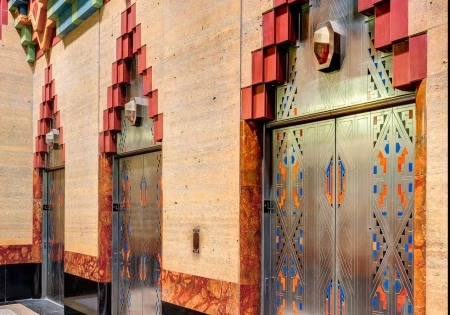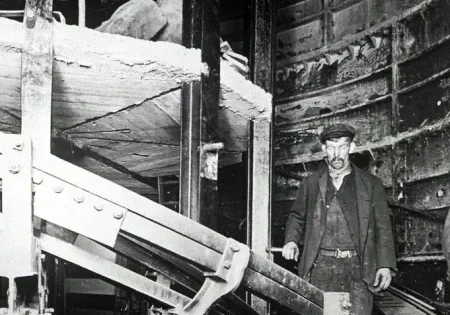The Lost Art of Elevator Doors
Charles N. Judson, who in 1892 patented the car-and-shaft door system that set one door on the floor and one inside the car, emphasized safety, but little did he know that his patent would kick off a culture of architectural art now lost to the world. Early landing doors were scissor grates, with an inner accordion-style metal door, colloquially called a birdcage, that kept passengers safely inside the car. Unlike the enclosed elevator rides of today, passengers of the 19th and 20th centuries would look out at the concrete walls of the elevator shaft as they traveled between floors. But these see-through, cage-like doors were often only seen when inside. On the outside, buildings took the blank canvases that were the stationary outer doors on each floor and made them into art that enhanced the interior design of the building.
Beauty was an essential feature of any high-class, high-rise tower. The building’s design was part of the luxurious experience of advanced human architectural power. And the outer elevator doors on each floor were considered billboards for the building’s style, history, contents and purpose. While the double-door style survived a few decades after the introduction of the modern landing doors that have become standard today, eventually full automation of elevators replaced the human operators and hand-pulled dual doors entirely. With styles changing to fit modern minimalistic architectural design, the art in elevators quickly disappeared. Designing an ornate or thoughtfully artistic façade for the vertical-transportation machines became too costly and unnecessary in a culture of reliance on elevators for speed and convenience. Elevators are simply no longer widely considered the magical new experience they once were.
Modernization might have killed the art of the past, but some buildings, like the Medical Arts Building in Minneapolis, Minnesota, are keeping the echoes of old elevator door art design alive. The medical building has a Gothic style, which informed the use of golden doors featuring the building’s initials in Gothic typeface. The doors also hold stylized caducei, the symbolic medical image of the rod wrapped in snakes, on its elevator doors, reminding visitors of a mostly lost art form.
Get more of Elevator World. Sign up for our free e-newsletter.










